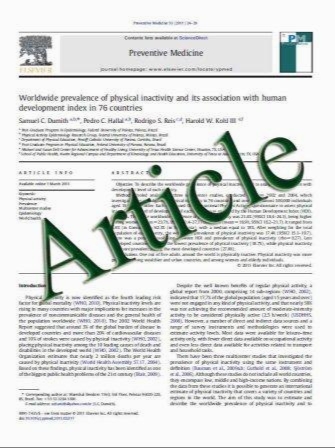Effect of the overexpression of BRCA2 unclassified missense variants on spontaneous homologous recombination in human cells
- نوع فایل : کتاب
- زبان : انگلیسی
- مؤلف : Cristina Balia Alvaro Galli Maria Adelaide Caligo
- چاپ و سال / کشور: 2011
Description
Breast Cancer 2 gene (BRCA2) mutation carriers have a 45% chance of developing breast cancer and a 11% risk of developing ovarian cancer by the age of 70. While hundreds of BRCA2-truncating mutations have been associated with an increased cancer risk in carriers, the contribution of unclassified variants (UCVs) to cancer risk remains largely undefined. BRCA2-defective cells show a high degree of chromosome instability. Although a functional assay based on the BRCA2 capability to stimulate DSB-induced homologous recombination (HR) as a way to classify UCVs has been proposed, so far no data are available concerning the effect of BRCA2 UCVs on spontaneous HR. In this study, we proposed a novel functional HR-based assay that determines the effect of the transient overexpression of the BRCA2 variant on spontaneous HR. This assay will help one in the difficult task of classifying UCVs, and it will give more information on how BRCA2 may induce genome instability and on the basic mechanism of BRCA2-induced tumourigenesis. We chose 11 BRCA2 UCVs not previously described or classified in other articles, and distributed along the entire BRCA2-coding region. They are as follows: G173V, D191V, S286P, M927V, T1011R, L1019V, N1878K, S2006R, R2108C, G2353R and V3091I. Basically, because the expression of BRCA2wt and the neutral variants did not increase spontaneous HR, we classified the variants G173V, S286P, M927V, T1011R and L1019V as HRnegative and presumed that they were not pathogenic. The HR-positive variants, D191V, N1878K, S2006R, R2108C, G2353R, and V3091I, which increased HR as much as the cancer-associated variant G2748D, could probably be classified as pathogenic. We observed that all our variants in the C-terminus of the protein behaved differently from the wt, suggesting a role for this protein region in spontaneous HR.
DOI 10.1007/s10549-011-1607-y Received: 23 March 2011 / Accepted: 21 May 2011


